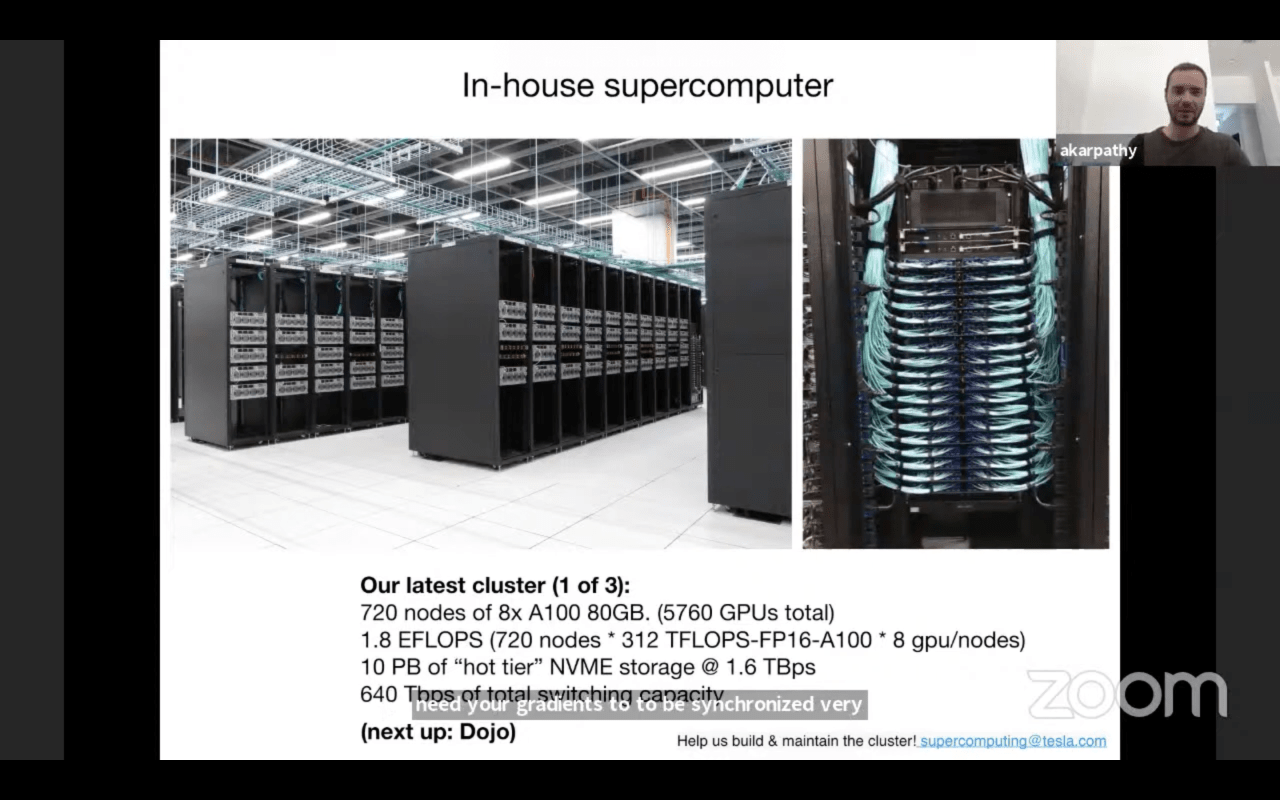In a world where technology seems to evolve at lightning speed, Tesla is forging ahead with an audacious vision-only approach to autonomous driving. This bold strategy prioritizes high-quality optical cameras over traditional radar and lidar sensors, capitalizing on the power of video data to drive its neural net-based autonomous vehicle technology. As the visionary CEO Elon Musk hints at the capabilities of the yet-to-be-completed “Dojo” supercomputer, Tesla’s latest developments are changing the landscape of the automotive industry and the future of self-driving cars.
The Backbone of Tesla’s Ambitions: The New Supercomputer
At the recent Conference on Computer Vision and Pattern Recognition, Tesla’s head of AI, Andrej Karpathy, unveiled the company’s newly developed supercomputer, a prototype that sets a foundation for what Dojo will ultimately achieve. This powerhouse is built to handle colossal data sets and uses advanced machine learning to train Tesla’s autonomous driving system reliably. With a staggering capacity of 10 petabytes of NVME storage and an incredible speed of 1.6 terabytes per second, Tesla is positioning itself as a key player in the supercomputing arena.
- Processing Power: The supercomputer’s performance benchmarks approach the fifth most powerful supercomputer globally, utilizing 1.8 EFLOPS of raw computing power. This allows Tesla to analyze vast amounts of video captured from its fleet of cars.
- Data-Driven Decision Making: The need for extensive training data is paramount, and Tesla’s supercomputer captures video at an impressive 36 frames per second from eight surrounding cameras, gathering an unprecedented amount of environmental information.
The Vision-Only Approach: A Game Changer
Unlike many competitors that rely on LIDAR systems and intricate high-definition maps, Tesla’s reliance on cameras allows for a much more streamlined and scalable approach. This vision-only strategy presents distinct advantages:
- Speed: Cameras process data faster than radar systems can, enabling quicker reaction times.
- Flexibility: The neural networks can theoretically function across diverse environments without the need for customized map data.
- Cost-Effectiveness: By reducing reliance on expensive and cumbersome sensors, Tesla is simplifying the manufacturing and deployment of its vehicles.
Andrej Karpathy drew compelling parallels between human and machine response times, emphasizing that a silicon brain can provide 360-degree situational awareness with instantaneous reaction capabilities, traits that severely outpace human limitations.
Innovation in Action: Real-World Applications
Tesla’s supercomputer isn’t merely a conceptual triumph; it demonstrates real-world applications designed to improve road safety and driving efficiency. Karpathy showcases specific scenarios where AI corrects poor driver behavior, such as:
- Emergency Braking: The autonomous system identifies potential hazards such as pedestrians and intervenes promptly.
- Traffic Alerts: The supercomputer can send timely warnings to drivers approaching traffic signals that may not be within their immediate view.
By accumulating over a million videos and labeling 6 billion objects with accurate dimensions, velocity, and acceleration, Tesla’s AI is remarkably ahead in building a robust data framework that enhances supervised learning processes. Karpathy acknowledges this success but admits that navigating through complex urban environments remains an ongoing challenge.
The Journey Ahead: Challenges and Opportunities
While Tesla is making giant strides towards achieving full autonomy, there are significant hurdles to overcome. The intricacies of driving within very congested areas, like San Francisco, highlight the need for continuous improvement of AI algorithms. With autonomous technology relying heavily on data fidelity, the race to create cleanly labeled datasets remains vital.
Selectively engaging in auto-labeling technology has been a breakthrough for Tesla’s programming team. This innovation reduces the manual workload typically associated with data labeling, expediting the learning process of neural networks. Continuous refinement of AI will be vital in achieving the level of reliability and safety expected from a vision-based autonomous driving system.
Conclusion: The Future of Autonomous Driving is Bright
Tesla’s vision-only approach signals a transformative moment in self-driving technology. The rapid advancements being made in the realm of deeply integrated AI and supercomputing are not only setting a benchmark in the automobile industry but also defining the future course of autonomous driving. The continued development of technologies like Dojo stands to reshape the entire transportation landscape by enabling machines that learn and adapt to diverse environments with unprecedented effectiveness.
At fxis.ai, we believe that such advancements are crucial for the future of AI, as they enable more comprehensive and effective solutions. Our team is continually exploring new methodologies to push the envelope in artificial intelligence, ensuring that our clients benefit from the latest technological innovations.
For more insights, updates, or to collaborate on AI development projects, stay connected with fxis.ai.

